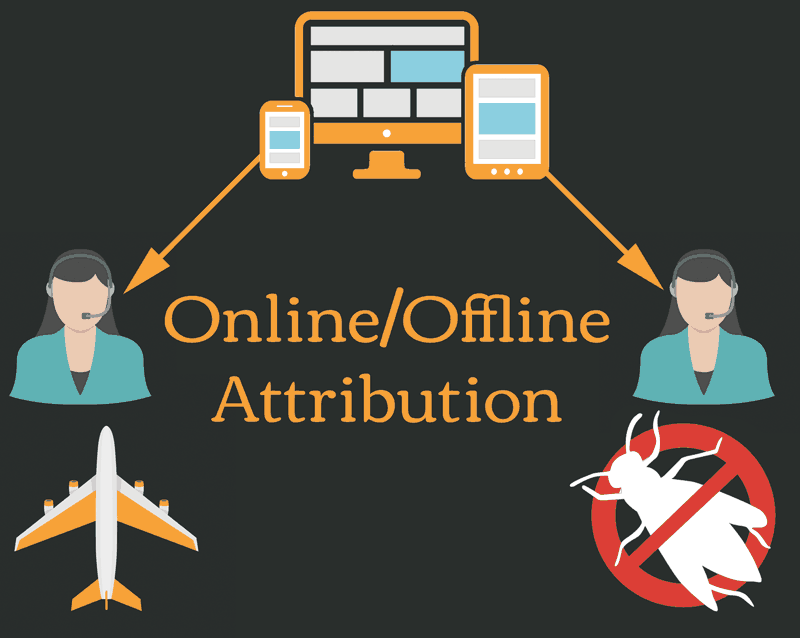Tips For Tackling The Online-Offline Attribution Challenge
- Fahad H

- Sep 4, 2014
- 3 min read

Today’s consumers use more media in their purchase process than ever, but mobile is becoming a dominant force.
In fact, according to xAd and Telmetrics’ U.S. Mobile Path-to-Purchase study, “mobile devices account for up to 64 percent of time spent online and 42 percent of mobile users consider mobile the most important resource in their purchase process.”
Measuring ad campaigns across multiple media is complicated, but universal metrics like calls and other secondary actions such as coupon and map downloads can help link digital and mobile engagement to offline consumer response and are strong conversion indicators for many categories.
Google has even taken note of the offline influence and recently introduced Website Call Conversions to help strengthen online-offline attribution for its AdWords programs.
Calls and other direct response metrics are key in helping marketers accurately attribute lead generation, determine which ad investments are truly paying off and where changes can yield more targeted results.
As up to 53 percent of mobile shoppers contact a business by phone, call tracking technologies such as dynamic number insertion (DNI) can reveal pre-conversion engagement behaviors and trends by enabling advertisers to tie calls placed from websites back to the online or mobile source that delivered the lead.
Putting Online-Offline Attribution Strategies Into Practice
Here’s how two different marketers are using calls to help bridge the online-offline gap and address attribution challenges head on:
Anyone making travel arrangements knows that a significant part of the reservation process fits into the classic online-offline dilemma. Many consumers still research travel arrangements online and then book offline, mostly via phone, as some travelers inevitably call the hotel to ask questions, confirm accommodations and compare pricing with what’s available online, etc. before booking a reservation.
One leading hotel chain had been utilizing mobile click-to-call, or taps on a call button, to measure calls but lacked true visibility into anything beyond the tap/click to determine if the call really happened. In an effort to more accurately track which networks, distribution partners, placements or creatives are driving quality leads, the hotel chain started measuring the actual phone calls that connected via call tracking technology.
As a result, they were able to glean actionable intelligence about the phone leads, including tying unique leads back to specific mobile and digital partner placements. The company also measured/tested various display creative, ad partners and then used these attribution insights to drive more consumer conversions and achieved a 33 percent increase in overall campaign ROI.

In another example, a large local-national digital agency helped a pest control brand close the online-offline gap and reduce their cost per lead by 32 percent.
Calls are a key lead source for the pest control category, so the agency sought a way to measure the volume of calls driven to the corporate website by the digital campaigns, for both performance reporting and program optimization.
To effectively optimize SEO and SEM efforts, the agency needed to track and attribute calls to paid and organic search separately. Utilizing DNI to add a short segment of JavaScript on the brand’s website, the company dynamically replaced contact phone numbers with call tracking numbers based on the lead source.
As a result, SEO lead attribution rose 19 percent and SEM attribution jumped nearly 30 percent. In addition, the agency leveraged the call data to optimize program performance, reduce the cost per lead, and ultimately, reveal more insight about the calls they were already generating.
Cross-Screen Performance Metrics Are Key
The bottom line is marketers must adopt strong, cross-screen performance metrics and best practices to effectively track shoppers’ online-offline purchase cycles. Establishing these practices will not only prove the full impact of their digital and mobile campaigns but also inform future digital campaign strategies based on a complete picture of what has driven a successful consumer response in the past.








Comments